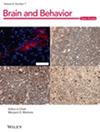Genetically Predict Diet-derived Antioxidants and Risk of Neurodegenerative Diseases Among Individuals of European Descent: A Mendelian Randomization Study
Abstract
Background
The incidence of neurodegenerative disorders (NDDs) is increasing, and currently, there are no curative treatments available for these conditions. The potential benefits of supplementation with diet-derived antioxidants and their metabolites for NDDs remain a subject of debate. In this study, we employed a two-sample Mendelian randomization (MR) analysis to investigate the potential causal relationship between elevated circulating antioxidant levels and the risk of NDDs.
Methods
We used single-nucleotide polymorphisms (SNPs) related to diet-derived antioxidants and p < 1E-05 as instrumental variables (IVs). The NDDs we studied included Parkinson's disease (PD) (33,674 cases and 449,056 controls), Alzeimers disease (AD) (111,326 cases and 677,663 controls), amyotrophic lateral sclerosis (ALS) (27,205 cases and 110,881 controls), and frontotemporal dementia (FTD) (3526 cases and 9402 controls) from GWASs conducted in the European descent. Two-sample MR was performed together with a series of sensitivity analyses. The main statistical analyses were conducted using the package “TwoSampleMR (V.0.5.6)” in R (V.4.2.0).
Results
Genetically predicted levels of α-tocopherol and carotene were found to be associated with a reduced risk of ALS, with odds ratios (OR) of 0.45 (95% confidence interval [CI]: 0.31, 0.66; p = 3.97 × 10^-5) and 0.82 (95% CI: 0.68, 0.99; p = 0.0427), respectively. Similarly, vitamin E (OR 0.70; [95% CI 0.50, 0.98]; p = 0.0358) and ascorbate (OR 0.85; [95% CI: 0.73, 0.98]; p = 0.0216) demonstrated a protective effect against PD. Furthermore, elevated levels of retinol were associated with a reduced incidence of FTD, with an OR of 0.92 (95% CI: 0.86, 0.99; p = 0.0196), although they were also linked to an increased risk of ALS (OR 1.02 [95% CI 1.01, 1.04], p = 0.0017) and PD (OR 1.06 [95% CI 1.02, 1.09], p = 0.0121). No significant causal association was observed between circulating antioxidants and AD.
Conclusion
This MR study indicated a potential protective effect of α-tocopherol and carotene on ALS, vitamin E and ascorbate on PD, and retinol on FTD, while also identifying retinol as a risk factor for ALS and PD. These findings could contribute to the exploration of dietary therapies for NDDs. Further research is necessary to substantiate the potential associations between diet-derived antioxidants or their metabolites and the risk of NDDs in individuals.


 求助内容:
求助内容: 应助结果提醒方式:
应助结果提醒方式:


